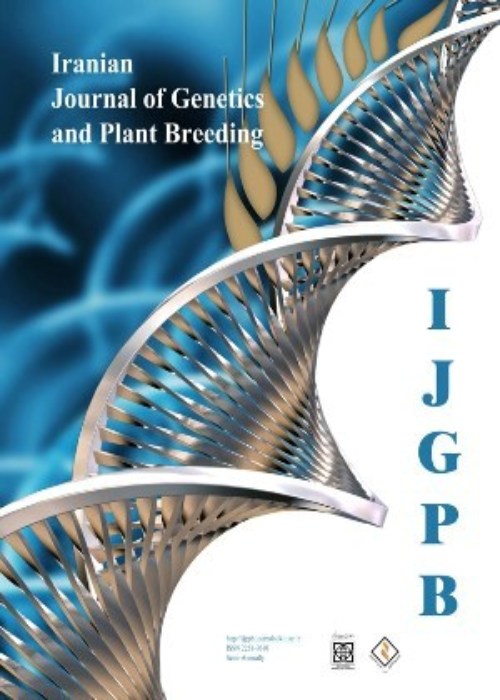Using AMMI model and its parameters for yield stability analysis of rice (Oryza sativa L.) advanced mutant genotypes of Tarrom-Mahalli
Genotype×environment interaction is one of the most important production challenges for plant breeders. Line selection with desirable yield is severely affected by genotype×environment interaction. In order to consider this interaction, 13 M8 mutant genotypes derived from Tarrom-Mahalli rice land races along with 3 control, Tarrom-Mahalli, Tarrom-Jelodar and Neda were used to evaluate their grain yield stability and adaptability using a RCBD design with 3 replications and two regions in Mazandaran province in 2016-2017. Analyses were carried out using the AMMI method. Effects of genotype, environment and their interactions were significant. Two components of the first model covered more than 91% of the interaction variance. The bi-plot showed that genotypes 15, 18, 31, 30 and 33, Tarrom-Jelodar and Tarrom-Mahalli were the stable genotypes. Results of AMMI model statistics showed that according to AMGE statistics, Neda, genotypes 26 and 31, based on ASI, MASI and MASV statistics, genotypes 33, 26 and 30 and based on AVAMGE, DA, FA, SIPC and ZA statistics, genotypes 33, 30 and 31 had the highest stabilities, respectively. According to the results of the indices of simultaneous selection for grain yield and stability for each of AMMI statistics it is observed that genotypes 33, 31, Tarrom-Jelodar, genotypes 26 and Neda cultivar are identified as the stable high yielding genotypes. Results showed that most of stability statistics based on the AMMI model are appropriate stability indices for identifying stable genotype with high grain yield.
-
The growth promoting effect of native cyanobacterial strains on rice germination, as well as a In silico analysis of ammonium transporter (OsAMT) gene family
Aliakbar Babajanpour Bora, Gholamali Ranjbar, Seyyed Hamidreza Hashemi-Petroudi *, Ghorbanali Nematzadeh, Hamid Najafi Zarini
Journal of Crop Biotechnology, -
Phytochemical Analysis of the Medicinal Plant Terrestrial Orchid (Orchis Simia) in the Flowering Stage
Zeinab Masoudi Jozchal, , Nadali Babaeian Jelodar*, Gholamali Ranjbar, Jamshid Farmani
Journal of Crop Breeding, -
Investigating the expression pattern of SAPK1 gene from protein kinase gene group (SNF1-Type) in rice plants under salt stress
Somayeh Kamrava *, Nad Ali Babaeian Jelodar, , Farhad Nazarian-Firouzabadi
Electronic Journal of Crop Production, -
Assessment of yield, yield components and early maturing in six species of Brassica
Fatemeh Rashidi, *, Nadali Babaiean Jelodar, Ali Dehestani Kolagar
Journal of Crop Improvment,



